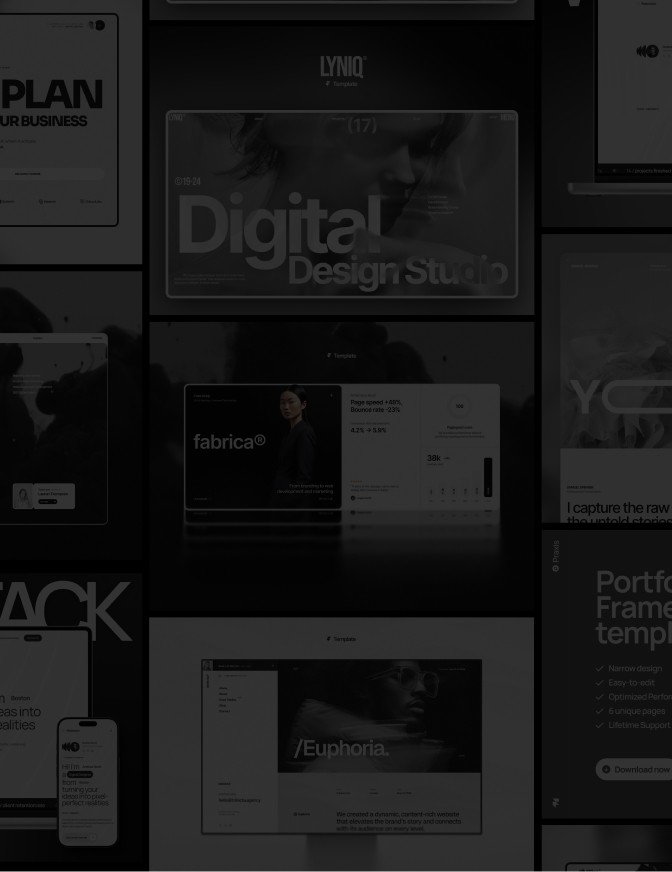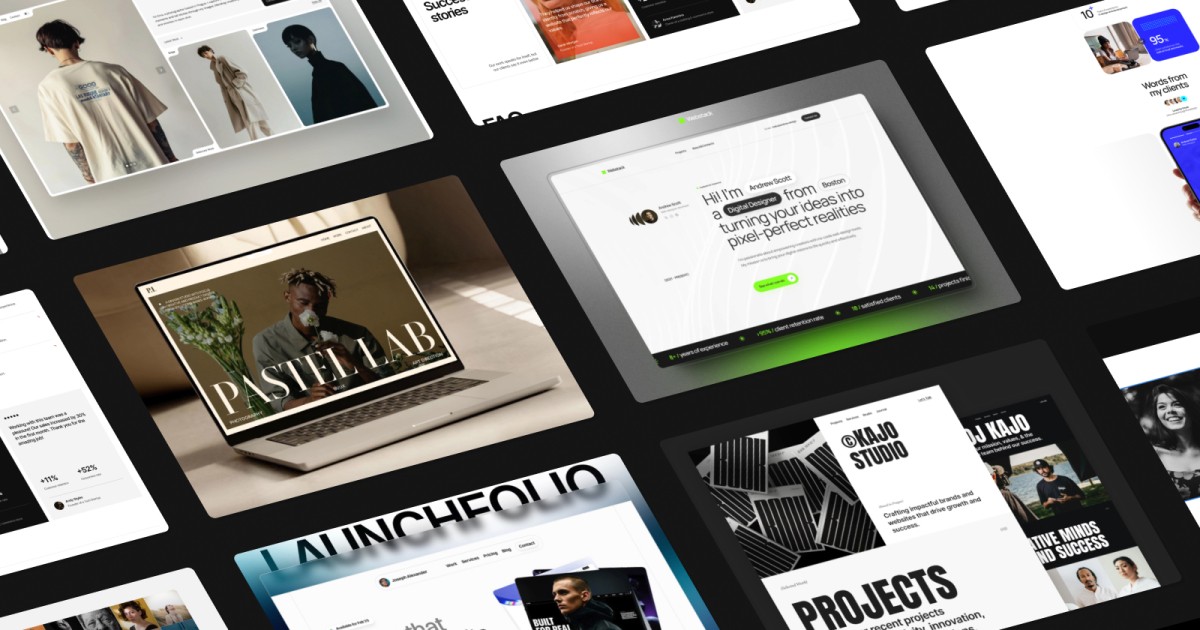



And using quality landing page templates might be one of the smartest things you can do, especially when you want something that looks professional without having to start from scratch.
Why landing page templates are a game-changer
Think of the number of hours you spend working on layout, copy blocks, and design hierarchy. With good templates, you don’t need to worry anymore, someone else has already designed it for you. The value here is not only in saving time, but also in using frameworks that are tested to convert users into customers, subscribers, or leads. You don’t have to reinvent the wheel, you can still make it your own.
Trust is built through clean design
Professional landing pages nearly always share one or two things in common: clear, concise headlines, focused imagery, and one very specific call to action. A good template provides both you and your users with exactly that. The value is upfront and center, with very few distractions. Plenty of white space. Give your message breathing room. It’s not just about aesthetics but also about how your users perceive the page.
Appropriate style for the goal
Whether you are selling a product, promoting an event, or offering an ebook, there is a template for it. Some may feature a large hero banner with a short form; others may present content in scrollable storytelling blocks. Choosing a template appropriate for your goal means your copy and images support the design instead of working against it.
Make them your own
Sure, templates save time, but they shouldn’t feel generic. A good use of a template involves switching fonts, colors, and content hierarchy to reflect your brand voice. Replace placeholders, headlines, and stock images with your own visuals and authentic copy. A little customization goes a long way when the structure is already in place.
Writing with conversion in mind
With a template to draw on, you can focus your energy on writing copy that resonates. Good landing pages address the reader’s problems, make the promise crystal clear, and guide the user one step closer to taking action. Be conversational and helpful, imagine sitting down for a quick one-on-one chat. A well-designed template gives you space to highlight testimonials, key benefits, and trust signals without overwhelming the page.
Testing and tweaking
One of the best advantages of landing page templates is how easy it is to iterate. Try changing a headline, adjusting button colors, or reordering content blocks. With the design system already in place, you can test quickly. Run A/B tests, short vs. long headlines, different CTAs, and refine until performance improves.
When to use templates and when to avoid them
Templates are great for speed, reliability, and user-friendliness. If you’re launching multiple campaigns or frequently rolling out new offers, templates are an excellent approach. However, if you need a highly distinctive brand experience or unconventional interactivity, a custom design might suit you better. Still, for most businesses and marketers, templates provide a practical mix of customization, structure, and consistency.

Selecting the right template
Choose a template that matches your industry, tone, and content type. For example, B2B service landing pages may need space for case studies or client logos, while e-commerce templates rely heavily on persuasive product imagery and streamlined checkouts. Make sure your template is mobile-friendly and responsive to different screen sizes. Keep it simple, avoid heavy graphics, complex animations, or bloated code that slows down loading times and hurts conversions.
Best practices for using templates
Follow these best practices to make landing page templates work for you:
Top-to-bottom flow: Guide visitors smoothly from headline to call to action.
Concentrated messaging (h3): Be concise and keep copy focused on a single objective. Avoid mixing multiple offers that confuse users.
Visual hierarchy: Use headings and subheadings to guide attention; avoid long blocks of text that bury the message.
Social proof: Include testimonials, ratings, or logos that build trust. Templates usually make it easy to integrate these.
Clear action: End with a bold, specific CTA like “Get the ebook” or “Join now”.
Fast load times: Limit scripts and heavy files to ensure your page loads quickly. Even the best template can’t save a page slowed down by bloated content.
Real-world example: from template to launch
Let’s say you’re about to launch a new online course. You choose a landing page template with a hero image, a short signup form, and three feature boxes underneath. Here’s how you adapt it:
Replace the hero image with a photo of you teaching.
Rewrite the headline into something stronger: “Complete your first course in 30 days.”
Add five key points addressing objections: No previous experience required, lifetime access, money-back guarantee, etc.
Place an early enrollment review prominently in the middle of the page.
Update the CTA to something direct and urgent: “Sign up now, get started today.”
Once live, you drive traffic and run A/B tests using analytics tools. Test different versions: headline placements, CTA styles, or image swaps. Because the template keeps the structure consistent, it’s easy to isolate what drives results and keep improving.
Key takeaway
Landing page templates offer more than convenience. They provide a proven foundation for clarity, clean design, and conversion-focused structure. They allow you to move quickly, test effectively, and maintain brand consistency. When you select the right template and customize it thoughtfully, you get speed without sacrificing individuality. That’s the sweet spot.
And using quality landing page templates might be one of the smartest things you can do, especially when you want something that looks professional without having to start from scratch.
Why landing page templates are a game-changer
Think of the number of hours you spend working on layout, copy blocks, and design hierarchy. With good templates, you don’t need to worry anymore, someone else has already designed it for you. The value here is not only in saving time, but also in using frameworks that are tested to convert users into customers, subscribers, or leads. You don’t have to reinvent the wheel, you can still make it your own.
Trust is built through clean design
Professional landing pages nearly always share one or two things in common: clear, concise headlines, focused imagery, and one very specific call to action. A good template provides both you and your users with exactly that. The value is upfront and center, with very few distractions. Plenty of white space. Give your message breathing room. It’s not just about aesthetics but also about how your users perceive the page.
Appropriate style for the goal
Whether you are selling a product, promoting an event, or offering an ebook, there is a template for it. Some may feature a large hero banner with a short form; others may present content in scrollable storytelling blocks. Choosing a template appropriate for your goal means your copy and images support the design instead of working against it.
Make them your own
Sure, templates save time, but they shouldn’t feel generic. A good use of a template involves switching fonts, colors, and content hierarchy to reflect your brand voice. Replace placeholders, headlines, and stock images with your own visuals and authentic copy. A little customization goes a long way when the structure is already in place.
Writing with conversion in mind
With a template to draw on, you can focus your energy on writing copy that resonates. Good landing pages address the reader’s problems, make the promise crystal clear, and guide the user one step closer to taking action. Be conversational and helpful, imagine sitting down for a quick one-on-one chat. A well-designed template gives you space to highlight testimonials, key benefits, and trust signals without overwhelming the page.
Testing and tweaking
One of the best advantages of landing page templates is how easy it is to iterate. Try changing a headline, adjusting button colors, or reordering content blocks. With the design system already in place, you can test quickly. Run A/B tests, short vs. long headlines, different CTAs, and refine until performance improves.
When to use templates and when to avoid them
Templates are great for speed, reliability, and user-friendliness. If you’re launching multiple campaigns or frequently rolling out new offers, templates are an excellent approach. However, if you need a highly distinctive brand experience or unconventional interactivity, a custom design might suit you better. Still, for most businesses and marketers, templates provide a practical mix of customization, structure, and consistency.

Selecting the right template
Choose a template that matches your industry, tone, and content type. For example, B2B service landing pages may need space for case studies or client logos, while e-commerce templates rely heavily on persuasive product imagery and streamlined checkouts. Make sure your template is mobile-friendly and responsive to different screen sizes. Keep it simple, avoid heavy graphics, complex animations, or bloated code that slows down loading times and hurts conversions.
Best practices for using templates
Follow these best practices to make landing page templates work for you:
Top-to-bottom flow: Guide visitors smoothly from headline to call to action.
Concentrated messaging (h3): Be concise and keep copy focused on a single objective. Avoid mixing multiple offers that confuse users.
Visual hierarchy: Use headings and subheadings to guide attention; avoid long blocks of text that bury the message.
Social proof: Include testimonials, ratings, or logos that build trust. Templates usually make it easy to integrate these.
Clear action: End with a bold, specific CTA like “Get the ebook” or “Join now”.
Fast load times: Limit scripts and heavy files to ensure your page loads quickly. Even the best template can’t save a page slowed down by bloated content.
Real-world example: from template to launch
Let’s say you’re about to launch a new online course. You choose a landing page template with a hero image, a short signup form, and three feature boxes underneath. Here’s how you adapt it:
Replace the hero image with a photo of you teaching.
Rewrite the headline into something stronger: “Complete your first course in 30 days.”
Add five key points addressing objections: No previous experience required, lifetime access, money-back guarantee, etc.
Place an early enrollment review prominently in the middle of the page.
Update the CTA to something direct and urgent: “Sign up now, get started today.”
Once live, you drive traffic and run A/B tests using analytics tools. Test different versions: headline placements, CTA styles, or image swaps. Because the template keeps the structure consistent, it’s easy to isolate what drives results and keep improving.
Key takeaway
Landing page templates offer more than convenience. They provide a proven foundation for clarity, clean design, and conversion-focused structure. They allow you to move quickly, test effectively, and maintain brand consistency. When you select the right template and customize it thoughtfully, you get speed without sacrificing individuality. That’s the sweet spot.










